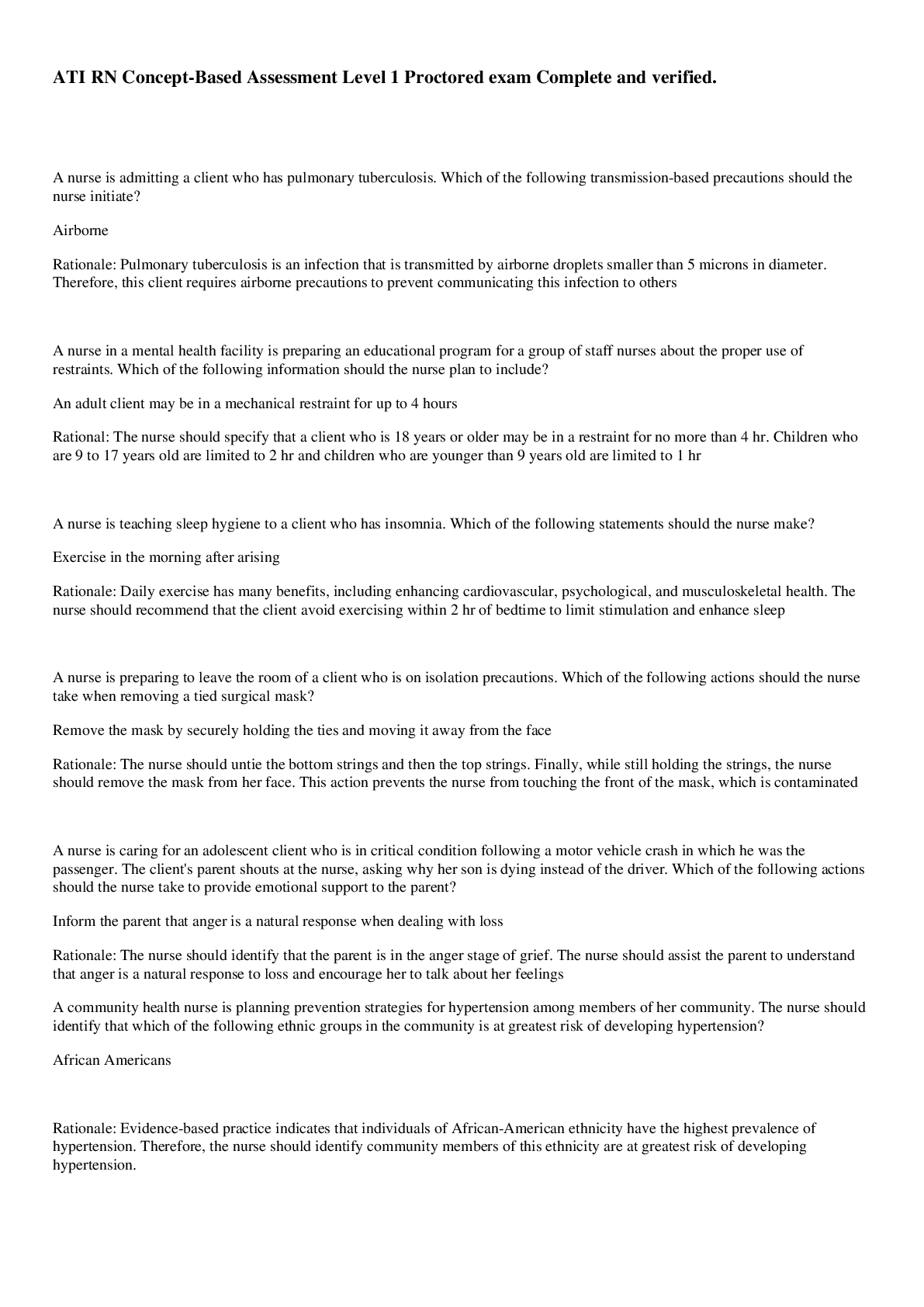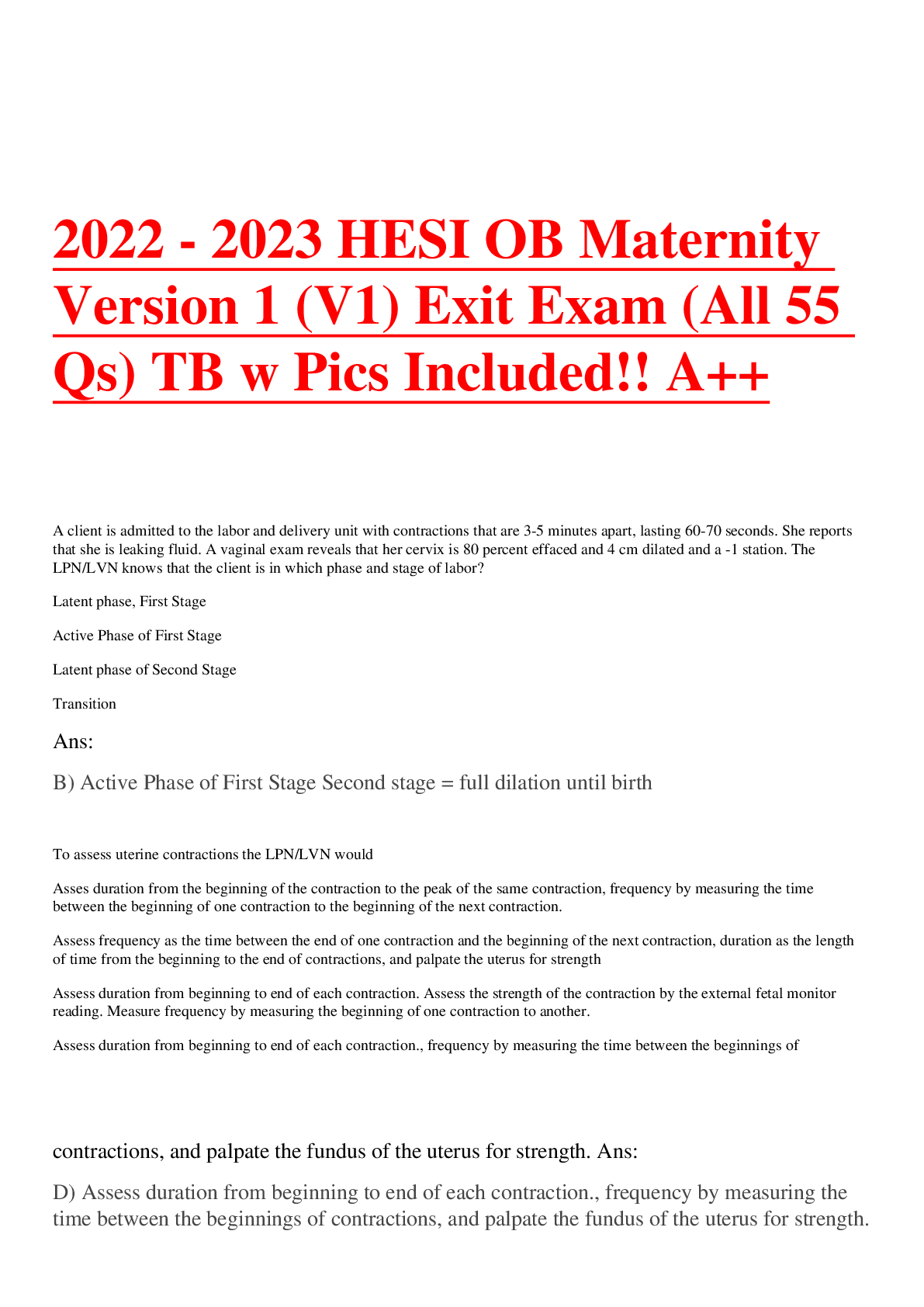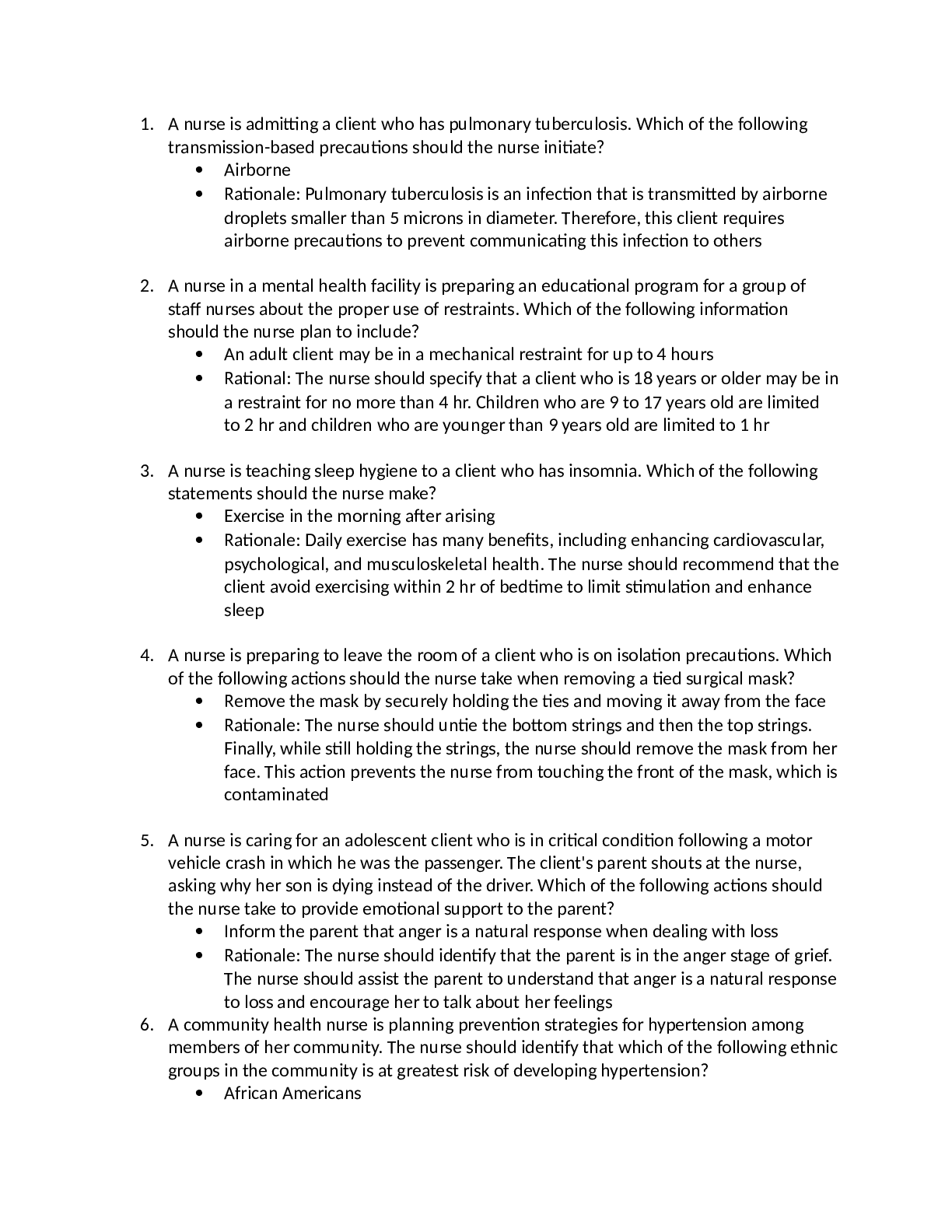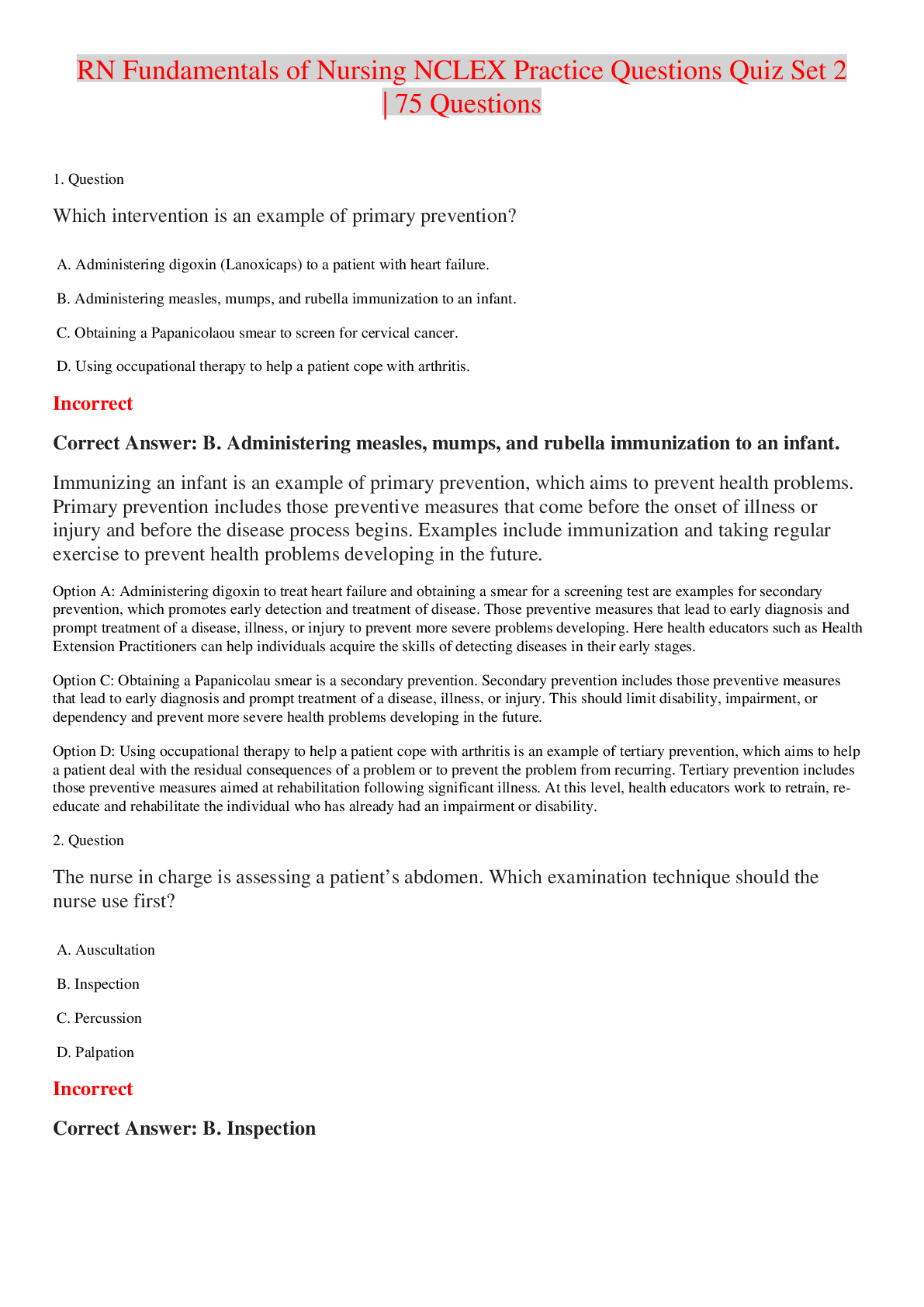*NURSING > EXAM > ATI RN Concept-Based Assessment Level 1 Proctored exam Complete and verified. (All)
ATI RN Concept-Based Assessment Level 1 Proctored exam Complete and verified.
Document Content and Description Below
8. A nurse is reviewing a client's new prescriptions that were just documented in the client's medical record by the provider. Which of the following abbreviations should the nurse clarify with the pr... ovider? • Enoxaparin 40 mg SQ QD • Rationale: The nurse should clarify this prescription with the provider. The abbreviations "SQ" and "QD" are considered error-prone and should not be used in documentation. The nurse should clarify that the provider intends the prescription to be administered subcutaneously once daily. "Subcutaneous" or "subcut" should be used instead of "SQ" and "daily" should be used instead of "QD." 9. A nurse is talking with a client who has major depressive disorder. The client states, "Nobody cares if I'm around or not." Which of the following responses should the nurse take? • It sounds as though you’re feeling hopeless • Rationale: This statement by the nurse is an example of restating, which is a therapeutic response. This technique restates the main idea the client has expressed and allows the client to clarify any misunderstanding. 10. A nurse is preparing to administer a unit of packed RBCs to a client. In adherence with the Joint Commission National Patient Safety Goals regarding blood administration, which of the following actions should the nurse plan to take? • Verify the client and blood component using a two-person process • Rationale: The Joint Commission National Patient Safety Goals regarding blood transfusions includes improving the accuracy of client identification. The nurse should eliminate transfusion errors related to client misidentification by using a two-person verification process to identify the client and the blood component. 11. A nurse on a medical-surgical unit is caring for a group of clients. Which of the following clients should the nurse monitor for the development of reflex urinary incontinence? • A client who has a T12 spinal cord injury • Rationale: The nurse should identify that a client who has a C1 to S2 spinal cord injury is at risk of developing reflex urinary incontinence. With this type of incontinence, the client is unaware that the bladder is full and therefore lacks the urge to void, resulting in the involuntary loss of urine. The nurse should monitor for this form of incontinence and implement interventions such as intermittent catheterization. 12. A nurse is documenting an assessment in a client's electronic health record when an assistive personnel (AP) asks to enter the morning blood glucose for the client. Which of the following actions should the nurse take? • Request that the AP use another computer to enter the data • Rationale: The nurse should request that the AP to go to another computer that is not in use to enter the morning blood glucose from the client. This is time- sensitive data that needs to be entered in the computer as soon as possible. [Show More]
Last updated: 2 years ago
Preview 1 out of 16 pages

Buy this document to get the full access instantly
Instant Download Access after purchase
Buy NowInstant download
We Accept:

Also available in bundle (1)

VALUE PACK FOR ATI RN Concept-Based Assessment Level 1 - Level 4 Proctored exam Complete and verified.
VALUE PACK FOR ATI RN Concept-Based Assessment Level 1 - Level 4 Proctored exam Complete and verified.
By Studybest 2 years ago
$29
4
Reviews( 0 )
$15.50
Can't find what you want? Try our AI powered Search
Document information
Connected school, study & course
About the document
Uploaded On
Jun 28, 2023
Number of pages
16
Written in
Additional information
This document has been written for:
Uploaded
Jun 28, 2023
Downloads
0
Views
237


















.png)

.png)


